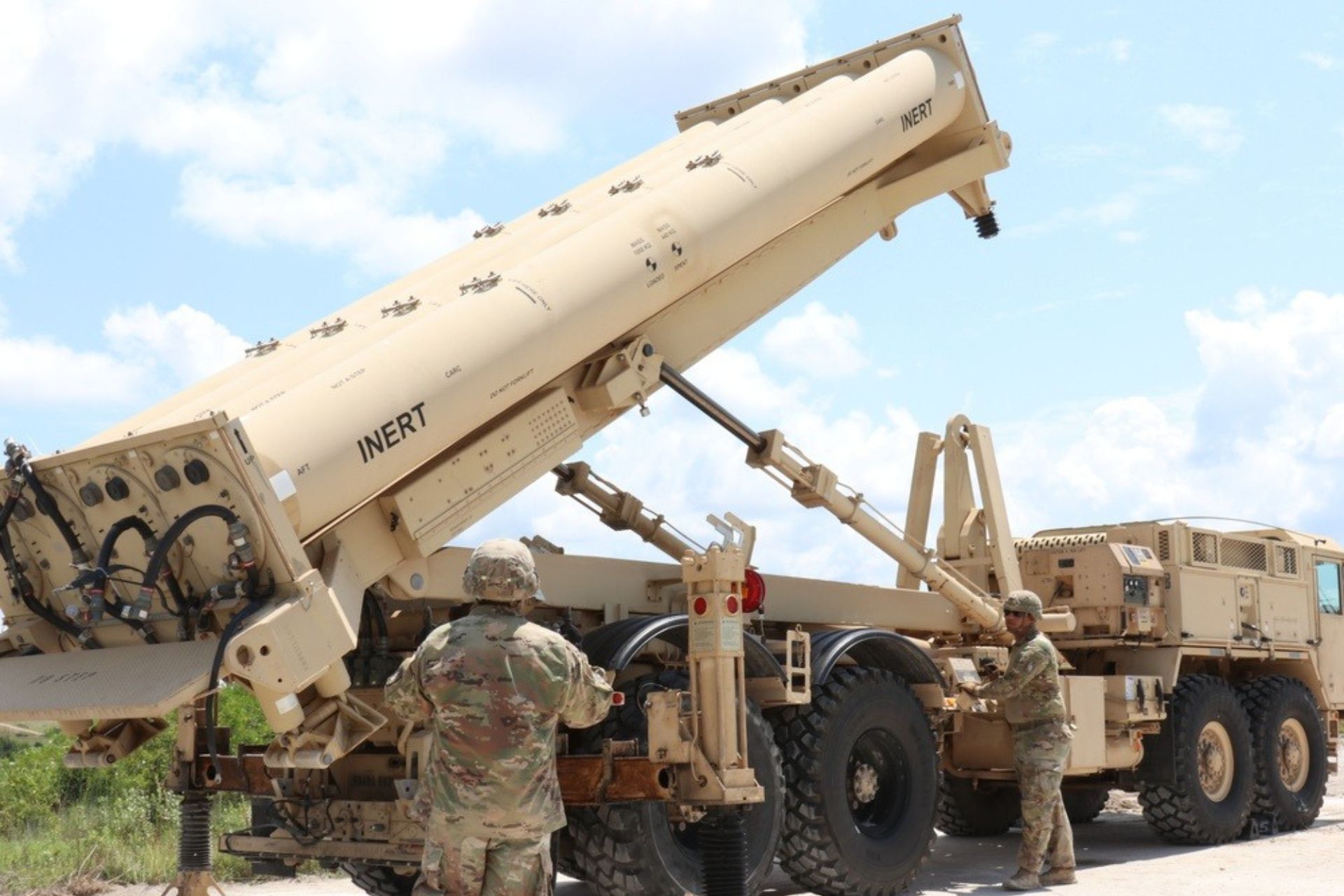Breaking News
Strategic THAAD Missile Defense Drills Held by US Army in Texas.
The U.S. Army's Terminal High Altitude Area Defense (THAAD) system, assigned to Bravo Battery, 62nd Air Defense Artillery Regiment, participated in a comprehensive training exercise at Fort Cavazos, Texas, on July 24, 2024. This exercise is part of an ongoing effort to prepare the unit for real-world scenarios and ensure they can effectively support and defend U.S. troops and allies worldwide.
Follow Army Recognition on Google News at this link

U.S. Army Soldiers, assigned to Bravo Battery 62nd Air Defense Artillery Regiment, conduct preventive measures checks and service on a missile system during a training exercise at Fort Cavazos, Texas, July 24, 2024. (Picture source: US DoD)
THAAD is a highly mobile, rapidly deployable system designed to intercept and destroy short, medium, and intermediate-range ballistic missiles during their terminal phase. The training at Fort Cavazos allowed the Army to refine its tactics, techniques, and procedures, demonstrating the system's mobility by swiftly deploying across various terrains and engaging simulated targets. These exercises are crucial for maintaining the operational capabilities and high standards required for deployment.
The THAAD system is a cornerstone of U.S. missile defense strategy, providing a critical layer of protection against missile threats. The system uses interceptor missiles with "hit-to-kill" technology to destroy incoming missiles, capable of hitting targets at distances of 150 to 200 kilometers. THAAD complements other missile defense systems, such as the Patriot, the Navy’s AEGIS Missile Defense System, and the Ground-based Midcourse Defense System.
A THAAD battery consists of 95 soldiers, six truck-mounted launchers, 48 interceptors, an AN/TPY-2 radar (Army/Navy Transportable Radar Surveillance and Control Mode 2), and a tactical fire control and communications component. This setup offers combatant commanders a rapidly deployable capability against a range of ballistic missile threats during their terminal phase of flight.
The exercise at Fort Cavazos underscores the strategic importance of maintaining a constant state of readiness. As global threats evolve, the U.S. Army continues to adapt and enhance its defensive measures. THAAD, developed by Lockheed Martin Corporation and manufactured in Troy, Alabama, has undergone extensive testing and deployment since its inception in 1992. Despite initial test failures, the system was redesigned and has since seen numerous successful intercept tests.
The U.S. Army currently deploys seven THAAD batteries, with plans to activate an eighth battery by 2025. These batteries are deployed in strategic locations, including Fort Bliss, Texas, Fort Cavazos, Texas, South Korea, and Guam. The deployment of THAAD units abroad highlights its critical role in U.S. defense strategy, providing protection against potential missile threats from adversaries.
During the deployment in South Korea, China expressed concerns about the THAAD deployment, particularly regarding the system's surveillance capabilities rather than the interceptors themselves. Beijing fears that the radar system associated with THAAD could provide the United States with enhanced early warning and tracking capabilities for Chinese intercontinental ballistic missiles (ICBMs). This could potentially shift the strategic balance by giving the U.S. a slight advantage in monitoring and responding to missile launches, thus marginally affecting China’s nuclear deterrence.
THAAD's deployment history includes responses to potential threats in Guam, South Korea, Romania, Saudi Arabia, and other locations. The system's ability to provide continuous deterrence and protection is a testament to its effectiveness and reliability.
Continuous training and readiness exercises, such as the one conducted at Fort Cavazos, are essential to ensuring that THAAD units remain capable of meeting current and future challenges. As the U.S. Army and the Missile Defense Agency (MDA) work together to maintain and improve the THAAD system, these efforts reinforce the U.S. commitment to maintaining a robust missile defense posture.


























